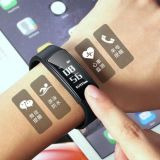With the number of cases of COVID-19 continuously rising, people are becoming more cautious about protecting themselves and others from the SARS-CoV-2 virus. The most common way of transmission is from person to person through respiratory droplets in the air; however, reports on the detection of the virus on frozen food packaging has struck fear across the world as people worry about catching COVID-19 through food products.
Due to the massive screening effort targeting imported food, China has reported the most cases of food packaging contamination. In the summer of 2020, health officials found traces of the SARS-CoV-2 virus on frozen food products imported into the cities of Pingxiang, Xiamen, and Dalian. The involved goods were frozen shrimp and chicken wings, imported from Ecuador and Brazil, respectively, that entered the country via the port city of Yantai. Similarly, there were traces of the virus found in seafood markets in Beijing, specifically on the packaging of imported salmon. The local government later decided to shut down a number of seafood and farmer’s markets to prevent the potential spread of the SARS-CoV-2 virus.
Research has shown that SARS-Cov-2 viruses can survive on surfaces up to days depending on the type of material and ambient conditions. On paper and plastic, which are common materials used for food packaging, viruses can live up to four to five days. Among the positive cases in China, health officials determined that the packaging and storage environment of three food businesses in Ecuador were unsafe and could have caused viral contamination. Health officials were not able to trace other cases, however. It is a difficult task to determine when the virus was introduced onto the packaging because it could have occurred at any point along the transport chain.
Although the detection of SARS-CoV-2 viruses on imported food goods has stimulated anxiety in the general public, WHO and CDC both state that there is no evidence to suggest that consuming food or drinking water is associated with catching COVID-19. This includes eating fruits, vegetables, meats, eggs, processed food, etc. The risk of getting COVID-19 from handling food products, including packaging and bags, is very low. There have been no cases of COVID-19 that are linked to touching food, packaging, or shopping bags. CDC specifically mentions that even though there may be workers in food processing facilities who test positive for COVID-19, there is no evidence that they may transmit the virus to consumers through the food they have handled. This is because SARs-CoV-2 viruses require a living host to grow and multiply. They gradually become weaker and lose the ability to infect people when they remain outside the body for extended periods of time. It should be noted that remnants of dead viruses can produce false positive results too. Overall, there is a very low risk of surface transmission of COVID-19.
Despite the statements of CDC and WHO suggesting that there is “no evidence” or “very low risk” of transmission through food, it is always a good idea to err on the side of caution. There are a couple of things you may do at home to protect yourself and your family.
Microwaving your food whenever possible can kill off SARS-CoV-2 viruses that may be present. Microwave sterilization process involves delivering radio-frequency waves to water molecules in food products. The water molecules vibrate rapidly, thereby producing high heat to kill off potentially harmful viruses. Although CDC states that they do not have direct data for the temperature-based cut-off for inactivation of the virus, according to Food Safety: Microwave Sterilization Machines can kill COVID-19 viruses, home-style microwaves are capable of completely inactivating SARS-CoV-2 in 5 minutes. This conclusion is based on the academic review article Using heat to kill SARS-CoV-2 and food safety guidance from CDC both referenced in the article. By doing so, you will have peace of mind that there is next to 0 chance that you may be eating food contaminated with SARS-CoV-2 viruses.
Practicing good hand hygiene is always important. It is still possible to contract the virus during a meal by touching one’s mouth, nose, or eyes if your hands are soiled. This is why you should wash your hands with soap and water for at least 20 seconds. If soap and water are not available, using a hand sanitizer containing at least 60% alcohol will also suffice.
Good food safety practices can minimize the risk of all types of illness. Keep in mind the 4 basic steps of food safety: CLEAN, SEPARATE, COOK, CHILL. Before eating, rinse fresh fruits and vegetables and then scrub firm produce with a clean brush. Clean the lids of canned goods before opening. Refrigerate or freeze all perishable goods within 2 hours of purchasing. You should regularly clean and sanitize all kitchen surfaces with commercially available disinfectants or home-made DIY solutions containing 0.05% sodium hypochlorite or 70% ethanol. However, DO NOT use disinfectants on food packaging or directly to food products. Chemical residue may cause severe illness in humans when inadvertently consumed. If you wish, you can wipe down food packaging with water and allow it to air dry.
Food is a source of comfort and nourishment. We hope that with the advice above you can share meals with your family with joy instead of fear during the COVID-19 pandemic.




